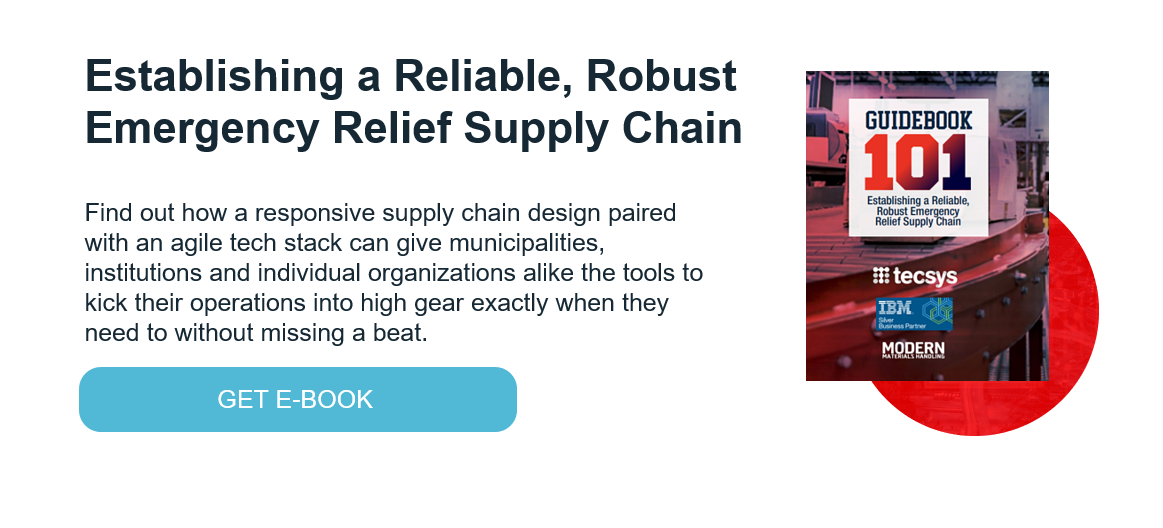Are We Ready to Deliver the COVID-19 Vaccine?

Please enjoy this republication of a Inbound Logistics article.
In March 2020, as the dynamics of a pandemic arrested American healthcare systems both in their capacity to deliver care and sustain supply availability, health systems around the world enacted their emergency preparedness protocols. Very quickly, medical, pharmaceutical and health organizations became aware of how effectively they had planned for these most extreme conditions. A vast number of them are now re-evaluating those plans.
“Plans are nothing. Planning is everything.” Dwight Eisenhower wasn’t referring to healthcare supply chain management, but his words hit home for anyone in this space, reeling from the emergency preparedness death knell we call COVID-19.
Underpinning the logistics of these operations is a software stack that helps turn all those cogs and dials. And what’s particularly challenging in the timing of this pandemic is that most health systems are somewhere in the middle of a multi-year modernization of this software stack, slowly shedding their Y2K-era legacy systems and migrating to more agile solutions engineered for today’s healthcare data and traceability requirements. In what was already a period rife with resistance to change and technological incertitude, Covid-19 thudded in and sat in the middle of the room.
The role of healthcare delivery networks in the management and administration of a Covid-19 vaccine will require efficient and effective operations. Some health systems have already undergone consolidated service center transformations and are in a better position to flex to this type of logistical demand. Others are still managing their supply chains in a more siloed manner, which may create visibility bottlenecks when the vaccine influx is in full tilt. Should hospitals and health systems lack that level of operational agility, they may consider how to set up a standalone emergency operation.
Panning out further, and as with other public health crises, the military stands at the ready to operationalize relief efforts. Paul Mango, the deputy chief of staff for policy at the Department of Health and Human Services, typified the role of the military for Operation Warp Speed as that of “the best logisticians in the world at the Department of Defense, working in conjunction with the CDC [in order to oversee] every logistical detail you could possibly think of.”
Mango then alluded to the immense importance of supply chain visibility: “We will have an operation center that will tell us at any given time exactly where every dose of vaccine is. […] If a vaccine dose is at risk of expiring, they will guide the movement of that to someplace else.”
Technology is needed to do some heavy lifting as the nation undertakes one of the most massive coordinated supply chain efforts in its history. Vaccine distribution requires lifecycle tracking and monitoring throughout the entire distribution process, inclusive of chain of custody waypoints, secure storage and full cold chain visibility, failure of which could negate the vaccine’s success. Real-time analytics will be needed to track and report on what has been processed, what is on route, and how supply is stacking up against dynamic demand.
Equally critical is orchestrating the ebbs and flows of availability across the broader market in today’s economy, as detailed in Bloomberg: “The infrastructure powering the global economy is scaling down for a protracted downturn just as pharmaceutical companies need to scale up for the biggest and most consequential product launch in modern history.”
The capacity to execute against this degree of healthcare supply chain strategy does not happen with general resource planning software. The exceptional resources and organization of the military demands an equally capable supply chain execution software designed for the unique logistical challenges of high-volume healthcare distribution.
There are only a handful of supply chain execution software providers that specialize in the healthcare distribution industry. Watercooler stories (which take a different form these days) of healthcare customers who are using such systems to circumvent shortages and supply regional competitors are energizing; for example, a recent go-live that included an 8-week signature-to-operation project to equip a healthcare customer with a new temporary distribution center for PPE; or the work being done at NYC Health to manage and distribute dwindling supply while building up reserves; these are the reasons why the healthcare supply chain is a different beast, and one that is a fulfilling professional focus.
In 2009, when supply chain provider Tecsys was contracted to power the CDC’s distribution of 125 million H1N1 vaccine doses across the United States, the system’s scalability and company’s deep healthcare industry domain knowledge played a central role; in collaboration with McKesson, Tecsys powered four distribution centers and in just two months, distributed over one hundred million vaccine doses with 99.99% order accuracy. The vaccine distribution effort included the centralized distribution of the H1N1 flu vaccine to as many as 150,000 sites across the country, making it the largest public health initiative in the CDC’s history. This was a magnificent public health feat. The brain trust combined with reliable and proven healthcare supply chain technology empowered military, public and private stakeholders to execute an unprecedented supply chain challenge.
A decade later, and while the scale is different, the logistical challenges are the same. Equitable, safe and expedient delivery of upwards of one billion vaccines demands impeccable coordination, a top-tier technology stack that is ready to roll with minimal notice, and supply chain experts who understand how a large-scale multimodal distribution operation can go sideways without proper planning.
Change takes time and energy—two things that stay-at-home orders ought to afford—but with businesses busy patching leaks, it’s hard to plan for the coming surge. And alas, as freight companies are pushing capacity to make up for lost time, last mile delivery companies are stretched meeting their SLAs, and digital commerce is shuffling how businesses fulfill their consumers’ orders, healthcare logistics are also being thrust into rethinking their operational strategies.
Are we ready? Well, the supporting supply chain execution technology exists; the resources are in place. Now that the vaccine is available, it is up to the logisticians to connect those dots from end to end.




